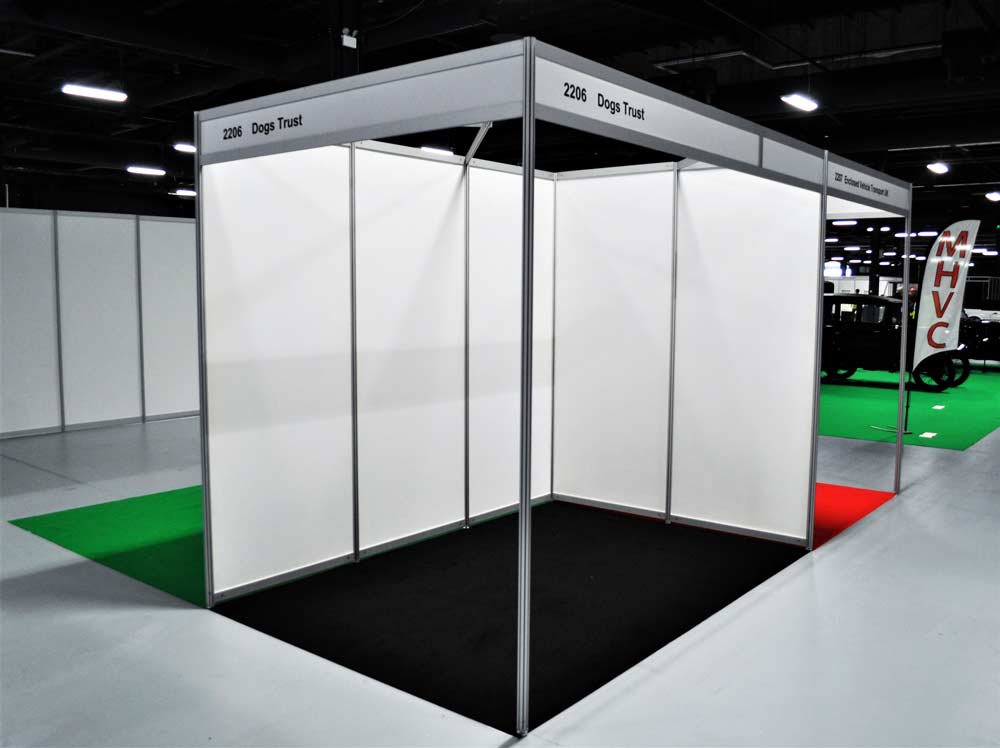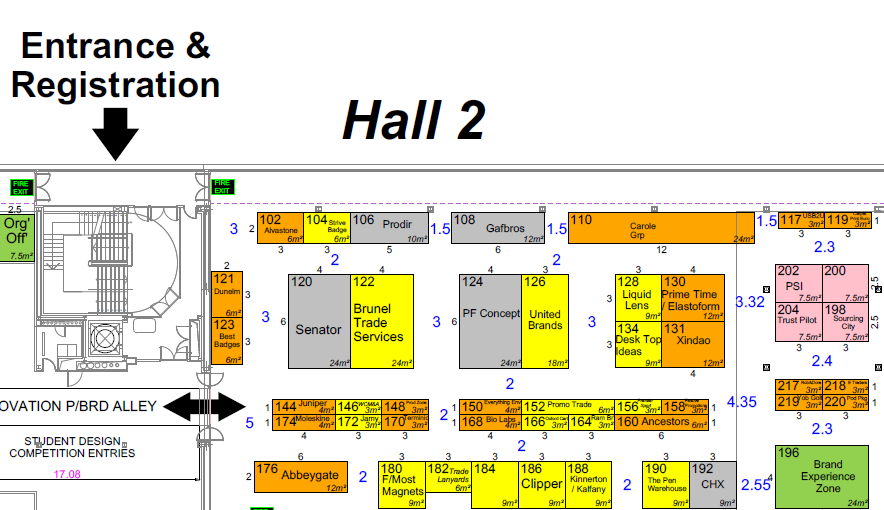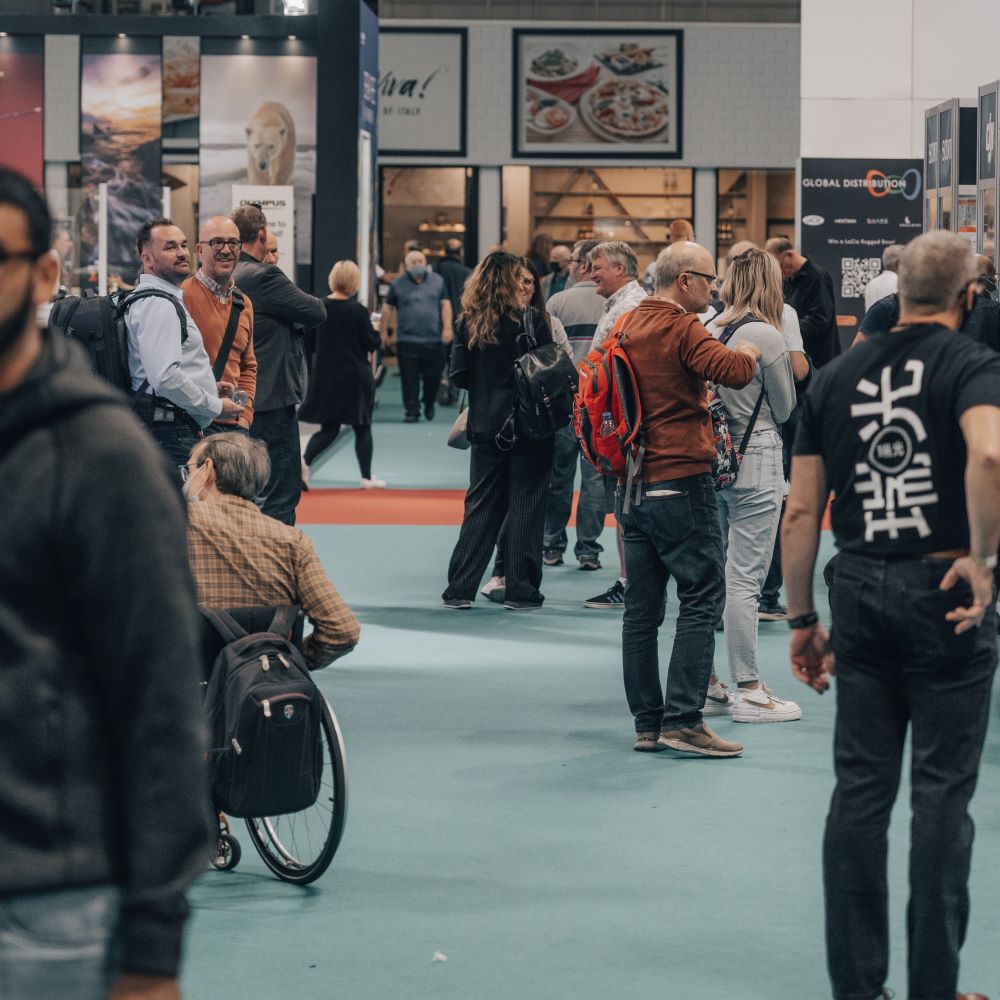How to Organise an Exhibition
We’ve broken down the process into manageable steps to help you plan an exhibition for your industry event. Our guide will streamline the process and help you plan a successful, professional-quality exhibition. If something you need isn’t here yet, let us know.
At LION Exhibitions, we provide exhibition support services for trade shows up and down the UK. We’ve worked with organisers and event planners in most industries, and we’ve seen almost every planning outcome.
0121 517 0250 or email us on [email protected]
Budgeting
The budget will determine a lot of your decisions: the venue, vendors, and even the exhibition layout. Start by creating a list of expenditures and getting quotes next to each one.
Here is an example of the main exhibition expenses. Costs for these core expenses make up your budget.
- Venue Hire: Make sure the cost is proportional to the size of the venue and that there are no hidden extras.
- Staffing & Security: Consider stewards, cloakroom staff, receptionists and security.
- Exhibition Services: Save money and ease pressure with shell schemes, electronics, flooring and furniture.
- Marketing: Printing costs and other advertising expenses will all add up.
- Decoration: Consider banners, branded window decals, and so on.
- Travel: Including travel, hotel and catering for your team and staff.
Once you have an idea of your budget, calculate your target ROI. This will help you determine what to charge for exhibition spaces and tickets.
Managing Time
There are only so many hours in a day, and only so many days before your event. Managing time well during the planning stages will be crucial to the success of your event.
Key priorities here are making sure you give enough notice to the venue, vendors, staff and exhibitors. Leave any of these too late and you may be scrambling at the last minute.
Venue Booking
Choose a venue that is large enough for your planned number of exhibitors and the number of attendees.
If you’re also running a conference alongside your exhibition, you’ll need conference rooms, lecture halls and smaller, private rooms for break-out sessions.
You can use temporary walling to create additional spaces if needed. Compare conference centres, arenas and exhibition centres for capacity, audio-visual provisions, amenities, accessibility and, of course, price.
Inviting & Managing Exhibitors
Invite brands to exhibit with a press release to industry publications. Include the cost of a space, the estimated reach (how many attendees you expect) and the benefits of showing at this event.
Once you’ve accepted exhibitors, communication is key. It’s good to keep communications in emails so that everyone can refer back to the details easily. If you have a lot of exhibitors, using email marketing tools can help manage the mailing list.
Respond to questions promptly, and share information about the venue and what exhibitors can expect as soon as you can.
Staffing and Training
Exhibitors are responsible for staffing their stands, but you will need to hire and train staff for your event. Receptionists and door staff, stewards to offer directions, security and cloakroom staff are all important considerations. You can talk with your venue about recruitment as they will likely have a preferred agency to work with.
Choosing Exhibition Spaces
There are two main types of exhibition spaces you can offer to brands. Either you give them an empty floor space to fill with a custom-built stand, or you use a shell scheme to create walled booths that they can decorate.
Many larger exhibitions offer both options, creating a two-tier system so that exhibitors can choose what works for their budget.
Lion Exhibitions Ltd. provides and installs shell schemes for exhibitions, so this is our area of expertise.
Exhibition Stand Types
Deciding what kind of exhibition space you should offer depends partly on your event budget and partly on the type of brands that will be on show.
Designing Exhibition Layout and Traffic Flows
Consider how attendees will flow through the building and exhibition. It can help to draw out a map of the space on graph paper and mark entrances and exits clearly, so you can make sure there are no bottlenecks or pinch points.
Plan the areas exhibition stands will take up to maximise the number of stands while leaving comfortable space for walking in between.
- Keep fire exits clear
- Ensure accessibility for those using mobility aids e.g. wheelchairs
- Consider additional features such as:
LION Exhibitions Ltd. can help with floor planning. Our experienced team are familiar with most UK venues and happy to design a layout that makes the most of the space. Contact us for support.
Marketing the Event
You should take advantage of all possible marketing channels to make sure your trade show event is well attended. This happens in two stages: inviting brands to exhibit and inviting guests to attend. Good avenues to follow include:
- Industry publications, both online and in print
- Search and Social, using PPC (Pay-Per-Click advertising)
- Your event website needs to be up to date so that people can find the details
- Social media sites, including industry groups on LinkedIn and Reddit.
- Print leaflets to distribute at other, related events.
Supporting Exhibitors
As an event planner, ensuring exhibitors and brands can run their stands well is a big part of the job. You will need to ensure the exhibition is accessible and in line with fire safety regulations.
Offer support with practical aspects, such as exhibitors’ graphics, stand set-up and electronics. LION also offer support with planning the layout to make sure regulations are met while making the most of the space.
Finally, make sure you get feedback from exhibitors and improve your planning year after year.
Exhibition Installation
How will your exhibition be installed? Choose a shell scheme provider that includes set-up and installation in the service. Exhibitions are usually installed either the day before or on the day of the exhibition. Make sure you book enough time in the venue for set-up and arrive early on the day to manage any crises or last-minute questions.
How we Install Exhibitions: Set-up, Pack-down and What to Expect.
Setting up Technology
Lighting, PA systems, projector screens, interactive displays and more all need setting up. Get a clear picture of which spaces require technical set-up, what equipment is needed and what the venue provides.
Do you need to hire additional technicians for support? Will your exhibitors have additional technical needs?
Ensure they know what is included and what they need to provide themselves.
Security and Safety
Exhibitions and trade shows have high attendance, and everyone must be kept safe. Setting up conference passes in good time will help things go smoothly and avoid overcrowding. Security on the door can check passes and manage any attendees that might cause problems.
You should also familiarise yourself with the venue’s fire safety protocols and make sure these are appropriately communicated to guests.
After the Event
When all is said and done, the shell scheme is packed away and the venue doors close, there is still work for the event planner. Once you’ve celebrated your huge achievement and taken time to rest, we’ve got next week’s to-do list ready for your team.
- Analyse Event Data: How many people came? How many tickets were sold? What does exhibitor feedback show? These are just some of the questions you need to analyse to understand the success of your event.
- Ensure all outstanding payments are made promptly: vendors and venues may not work with you next time if their invoices are forgotten.
- Follow-up Emails: chances are there are plenty of leads for your next event that you gathered across the show. Potential speakers and exhibitors need to be added to your mailing list so you can include them next time.
You Can Do It!
For an event planner, exhibitions and trade shows are some of the biggest challenges to take on. Hats off to you for going for it. Hopefully, this guide has been informative enough to help you organise an exhibition for the first time.
For all queries relating to exhibition services and installations, contact LION Exhibitions.





